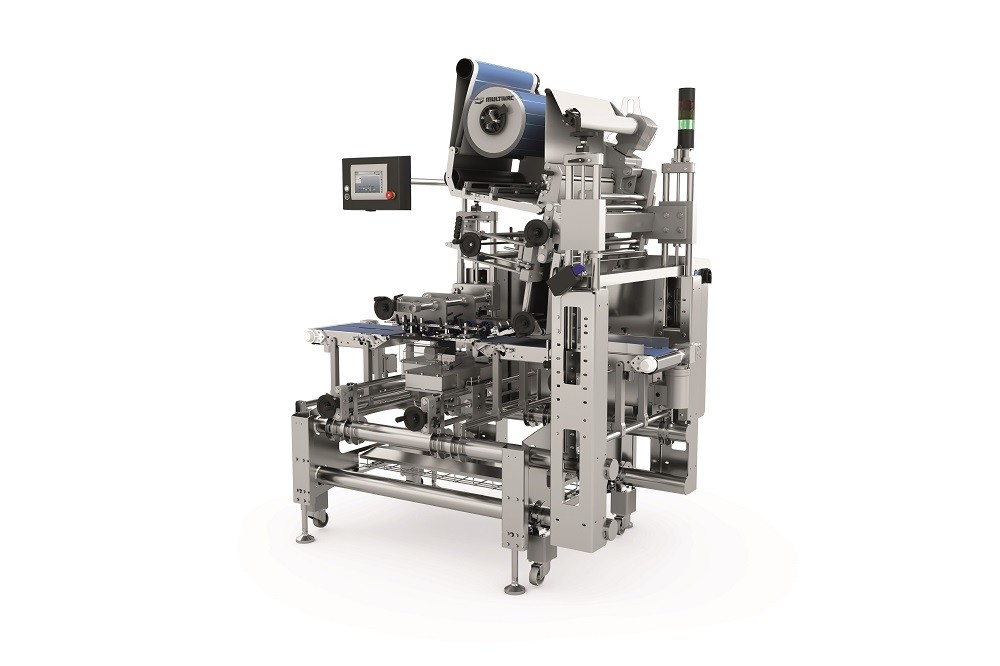WHETHER for biscuits, muffins, doughnuts, small cakes or whole gateaux, MULTIVAC’s full wrap labelling redefines the labelling of bakery products in hinged trays.
The L 310 conveyor belt labeller provides an efficient solution for C labelling and D labelling, and it enables the hinged tray to be securely sealed on one or both sides, as well as setting the benchmark in terms of sustainability.
Bakery products in transparent hinged trays are usually sleeved with a cardboard banderole. With its high-output L 310 conveyor belt labeller, MULTIVAC has developed a solution, which significantly reduces material usage when compared with a cardboard banderole, a full wrap label gives a material saving of up to 70%. This is not only resource-saving, it also means less weight throughout the entire logistics chain, as well as contributing to a better CO2 balance.

Strong performance even in high-output mode
This model has a patented, servo-driven press-on brushes, and makes automated C labelling and D labelling of packs possible at speeds of up to 120 packs per minute. It can take a label width of up to 500 mm. In addition to being able to apply just a simple top label, the L 310 can apply a label in a C shape over three sides of the pack or in a D shape over all four sides, and it is also possible to overlap the label on the underside of the pack. Both C labelling and D labelling offer the benefit, that the pack is sealed closed at the same time. An additional perforation feature can be used as an opening aid.
The packs are automatically labelled on the run, and they are either fed in manually or transferred automatically from an upstream module. The L 310 can also be equipped with an integrated printer, as well as a zero-downtime function and label/print monitoring for maximum output and process reliability at even the highest throughput. In conjunction with a high number of labels on the roll, this provides appreciable cost savings and a highly efficient process, when compared with time-consuming, manual packaging solutions.
A further plus point as regards efficiency is the rapid change of label rolls and batches, which soon pays dividends, particularly if there is a wide variety of products. All the setting parameters for the labeller and the print layout for the integrated printer are stored in the particular recipe, and these are called up automatically when a batch is changed. If an optional splice table is used, experienced operators can perform a label roll change in less than a minute.
High level of flexibility in both product and label
This labeller is suitable for a wide variety of different pack shapes: rectangular to round or oval packs, and even including special shapes such as those for cake slices. The only requirement is that the tray must be sufficiently rigid in its shape and offer adequate contact surface for the label.
Label material grades from 80 g/m2 up to 170 g/m2 can be run. Plastic-based label materials such as PP and PET not only provide transparent labelling of the pack, they also enable the different components of the pack to be separated and directed to existing recycling streams. And even paper labels with an adhesive, which allows them to be separated from the pack by the consumer, or alternatively with a soluble adhesive (for separation in the recycling process) can be used to ensure that the packs have the optimum recycling properties.
Since full wrap labels are stabilised by the backing material, it is possible to consider virtually all shapes – from labels with curves or cut-outs right up to adhesive-free areas on labels, or specially designed shapes to suit the product or pack. Printing the back of the label also offers a lot more space for product information.

 iConnectHub
iConnectHub
 Login/Register
Login/Register Supplier Login
Supplier Login



























